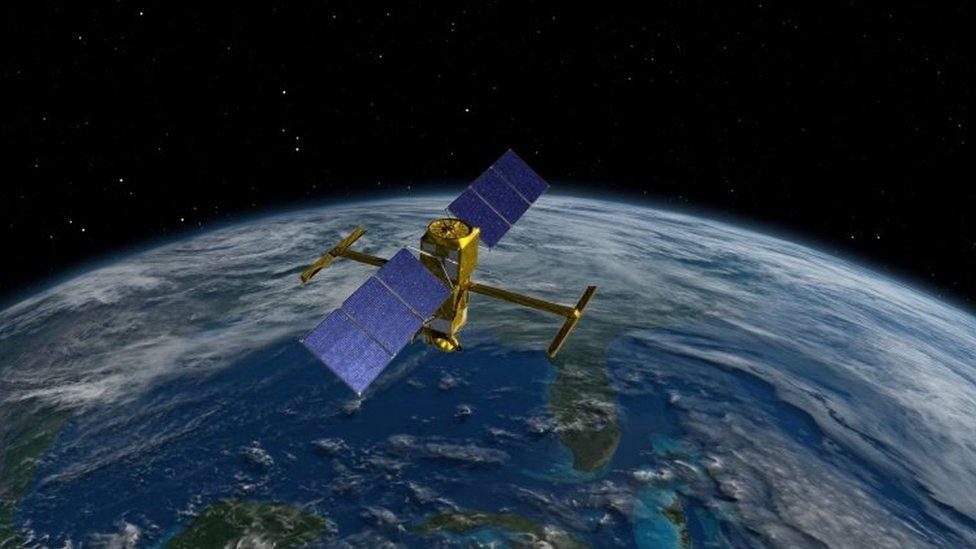SWOT: New Nasa mission to study Earth's water from space
- Published
- comments

An artist's impression of the SWOT satellite in space
Scientists are launching a new satellite mission to study the Earth's water from space.
The NASA-led project will carry out a survey of the world's oceans, lakes and rivers for the first time.
The satellite, called SWOT (short for Surface Water and Ocean Topography), will use radar to give scientists a detailed view of the water, which covers 70% of the planet.
It's hoped that the information gathered will help experts better understand and tackle climate change.
What is SWOT?
SWOT is around the same size as a 4x4 car
Nasa has teamed up with the French, Canadian and UK Space Agencies for the international project, which has been nearly 20 years in the making.
SWOT uses advanced microwave radar technology that experts say will collect height-surface measurements of oceans, lakes, reservoirs and rivers in precise, HD detail.
It is due to take off from Vandenberg US Space Force Base in California, on America's west coast on Thursday morning, aboard a Space X Falcon 9 rocket.
If all goes as planned, the satellite is expected to start producing data in the next few months.
What will happen?
The international project has been nearly twenty years in the making
Once above Earth, SWOT will carry out radar sweeps of the planet and scan nearly all of the planet's waters from orbit at least twice every 21 days.
One of the main aims of the mission is to explore how oceans absorb atmospheric heat and carbon dioxide - which is a natural process that regulates global temperatures and climate change.
The satellite will measure the height of water in Earth's oceans, lakes and rivers which will help give experts a better understanding of how they are affected by a warming world.
Oceans are estimated to have absorbed more than 90% of the excess heat trapped in the Earth's atmosphere by human-caused greenhouse gas emissions.
The information will also be used to look at how communities can better prepare for future events linked to climate change, such as floods.
Scientists have called the new mission a "total game changer."
Ben Hamlington, who leads NASA's sea-level change team, explained: "It's really the first mission to observe nearly all water on the planet's surface."
